Ganymede's Atmosphere
The Galileo mission discovered that Ganymede not only has a
magnetosphere, but its own atmosphere as well, although it is very, very thin. The atmosphere is created when molecules from the magnetosphere, moving very fast, hit the surface and knock out a water molecule. Because there is a magnetosphere, the atmosphere of Ganymede does not simply ‘float away’ like the atmosphere of Europa does.
One of the instruments on the spacecraft measured a stream of hydrogen molecules flowing away from the moon over its north pole. Another instrument measured the presence of an Ionosphere, a part of the atmosphere that is filled with ions. If molecules are leaving Ganymede all the time, that means they have to be replaced all the time, and that means there must be an active process that is creating the atmosphere. This image from the Hubble Space Telescope shows ozone on Ganymede. Ozone is an important constituent of the Earth’s atmosphere.
Even though Ganymede and Callisto have thin atmospheres, there does not seem to be a Ganymede or Callisto torus, the way there is at Europa and Io.
You might also be interested in:
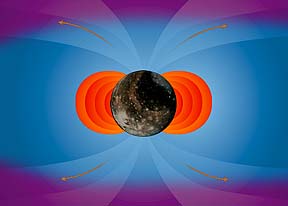
When the Galileo spacecraft flew by Ganymede, it found something that was a big surprise to everyone -- a very strong magnetic field. This is the first time a strong magnetic field had been found near
...more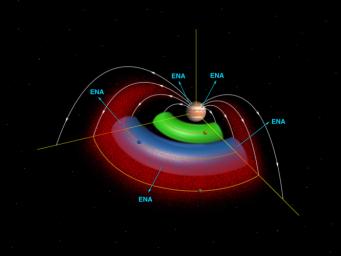
The Galileo mission discovered something amazing! Europa has its own atmosphere, although it is very, very thin. This atmosphere is created when fast moving molecules in Jupiter's magnetosphere hit the
...more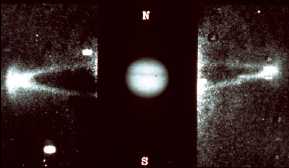
A satellite which has an atmosphere, such as Jupiter's moon Io, and which also is inside a magnetosphere (unlike the Earth's moon), will leave a cloud of particles behind as it orbits the planet. This
...more
The Galileo spacecraft was launched on October 19, 1989. Galileo had two parts: an orbiter and a descent probe that parachuted into Jupiter's atmosphere. Galileo's main mission was to explore Jupiter and
...more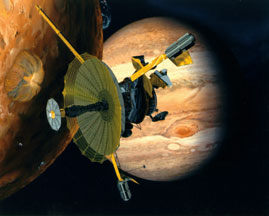
The Galileo spacecraft has finally reached the end of its road. Galileo has been orbiting Jupiter since 1995. On September 21, 2003, Galileo will dive into Jupiter's atmosphere and burn up. This crash
...more
Amalthea was discovered by E Barnard in 1872. Of the 17 moons it is the 3rd closest to Jupiter, with a standoff distance of 181,300 km. Amalthea is about the size of a county or small state, and is just
...more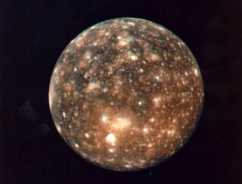
Callisto was first discovered by Galileo in 1610, making it one of the Galilean Satellites. Of the 60 moons it is the 8th closest to Jupiter, with a standoff distance of 1,070,000 km. It is the 2nd largest
...more














